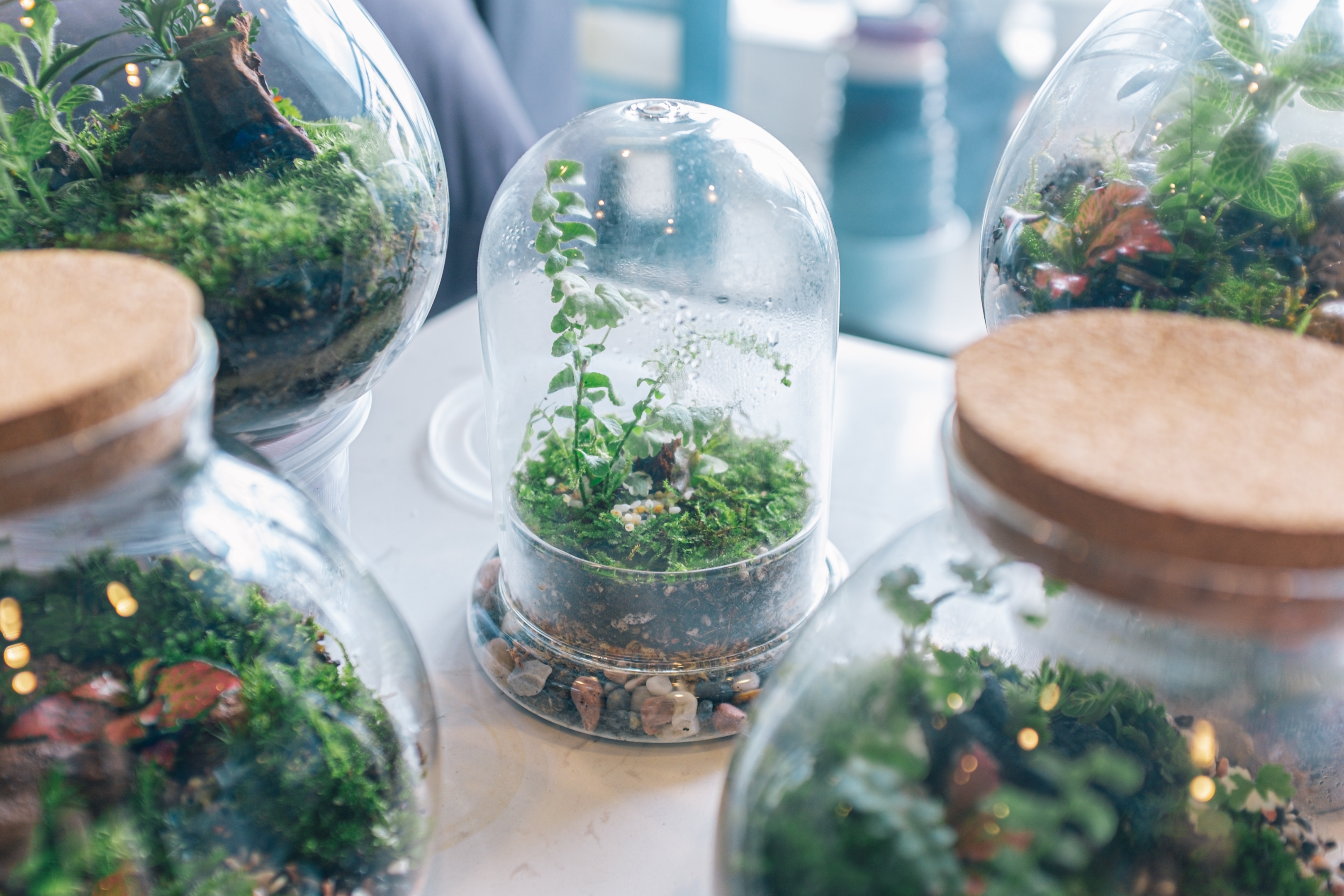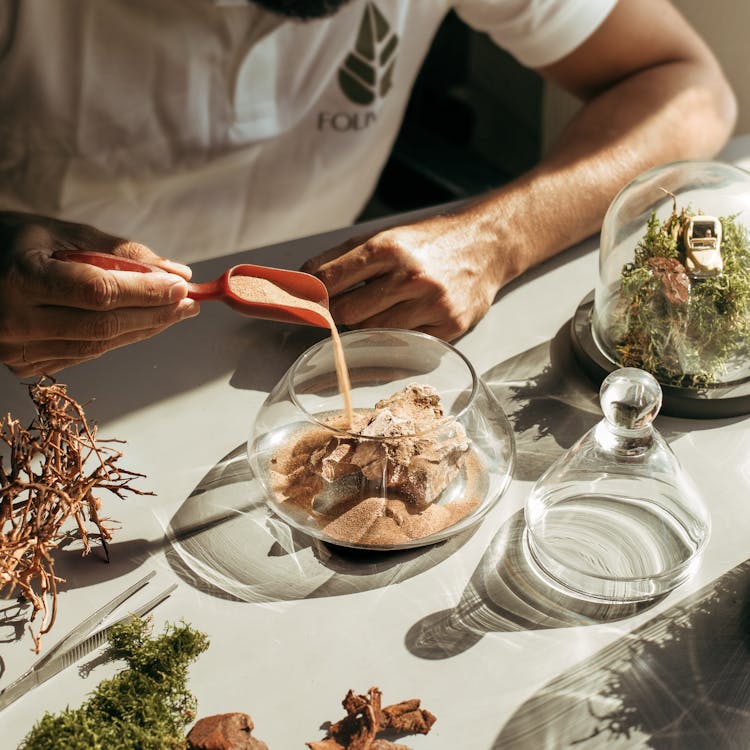
How to Take Care of a Closed Terrarium
How do you take care of a closed terrarium?

Terrariums make beautiful green additions to any space. Also known as gardens under glass, terrariums are a fun and artistic way to create and design miniature ecosystems of small plants in your home.
When properly cared for, these miniature botanicals can last several years. However, caring for a close terrarium can be pretty tricky, as they are expected to require little yet consistent maintenance.
A healthy terrarium looks lovely and creates a unique ecosystem. The art of caring for a closed terrarium might take a while to master, especially if you are new to owning one.
In this guide, we will go over how to take care of closed terrariums and the mistakes you should avoid in keeping your mini garden lush and beautiful. Let's get into it!
What is a closed terrarium?

First, terrariums are generally indoor gardening containers used to hold plants. They are small and can be referred to as mini-greenhouses. Terrariums are typically transparent and made of glass, but sometimes other enclosed items can be used. These containers are mainly used for small plants that do not adapt well to the home atmosphere.
There are two types of terrariums: closed and open. Our focus today is on the closed terrarium, a plant container with a lid. In such containers, the entire plant is enclosed with a lid, trapping moisture.
How do closed terrariums work?
Understanding how a closed terrarium works helps you maintain it properly. A closed terrarium is a miniature landscape with its own rain cycle. Moisture from the plant's transpiration and evaporation from within the container is recycled continually, and this turns into condensed "rain" that keeps the soil moist.
Through the glass, light is absorbed by the plant and photosynthesised into energy. In turn, this results in the healthy growth of the enclose plant.
Tips for taking care of closed terrarium

To be healthy, both air plants and tropical plants, as well as the typical moss terrariums must be in a stable, humid environment. If you are a new owner of a closed terrarium or are considering getting one, here is what you need to know about taking care of a closed terrarium.
Closed terrarium light requirements
Like every plant, terrarium plants also need sunlight, but not direct sunlight. Terrariums do not require a lot of light or direct sun. If placed directly under one, the terrarium's glass can act as a magnifier, burning the plants.
Additionally, when exposed to direct sunlight, the terrarium's temperature can rise quickly, leading to the container becoming steamy. Therefore, it is essential to keep these mini-gardens away from direct sunlight and extremely bright lights.
Too little light can also be bad for the plant. Therefore, ensure that your terrarium gets enough indirect light.
Water requirements
A completely enclosed terrarium requires little or no watering; therefore, watering such a closed system can be tricky. The rule is to know when you are close to flooding them in order not to have excess water in your terrarium.
One way you can do this is by watering the soil surface sparingly and then tilting the container. Hence, the water spreads throughout the terrarium to ensure that the moisture is evenly distributed.
A medium-pressure spray bottle can be used to spray water to prevent over-watering the plant. Additionally, use purified water that has been dechlorinated and distilled water to wet the terrarium, as these don't disrupt the bacterial balance in the container.
Ventilation requirements
Although a closed terrarium recycles its air, exposing the plant to air is still required from time to time. Yes, the closed terrarium produced oxygen in light and consumed it in darkness.
However, this composition isn't precisely balanced. Therefore, every two months or three weeks, the terrarium should be opened to receive outside air for a few hours to refresh the system.
Cleaning requirements
Closed terrarium glass must be cleaned occasionally to ensure sunlight shines through to the plants. A dirty glass can keep your terrarium from getting adequate light.
Therefore, to keep your wholly enclosed terrarium looking fresh, clean the interior of the glass with non-toxic products like water.
Additionally, if mineral deposits develop on the glass, they can be removed by soaking a paper towel in a solution of 50% water and 50% white vinegar. You can also clean the terrarium's hardscaping and any excess moisture.
Pruning requirements
Even though they are low-maintenance, terrarium plants need to be trimmed continuously to have healthy plants. Subtle changes like how much light a plant receives due to its location can cause overgrown plants within a terrarium, which is why occasional pruning is necessary. However, while at it, keep the following in mind:
-
Before trimming, you must sterilise all tools to be used. Additionally, the devices should be sharp enough to get a clean job done.
-
Plants grow at different rates, so you might not prune every plant in a terrarium at the same frequency.
-
With leaves touching the glass, the chances of condensation and mould growth in the terrarium are increased.
-
After pruning, bruised parts of the foliage or stems should be disposed of, as this could result in decay and affect the whole plant.
To successfully trim overgrown leaves, pinch them from the lower node where you want new growth to spring up. Additionally, the beheading technique can encourage bushier growth and limit plant size.
Dying plants extraction
If a terrarium plant is not thriving or looks like it is dying or diseased, it should be removed immediately. Failure to do so might infect the other plants in the terrarium, causing deadly root rot. So, using a small shovel, a long spoon, or a terrarium tool, remove the plant carefully without disturbing the roots of other plants.
A new plant of similar size and moisture and light requirements can be used to replace the dying plant in the terrarium. Ensure the new plant's roots are surrounded with soil to avoid air pockets.
Planting In A Closed Terrarium

First, ensure that your soil is sterile in order not to introduce pests and mould spores into your terrarium. If you don't think that the soil has been sterilised, you can do so by baking it. Next, rinse the plants thoroughly before placing them in the terrarium.
Doing this prevents foreign chemicals, bugs, and mould spores from getting inside. Finally, most thriving plants overgrow, surpassing the size of a typical terrarium within a year. Therefore, to maintain a lush terrarium plant, the landscape for your plant will need to be replaced yearly.
